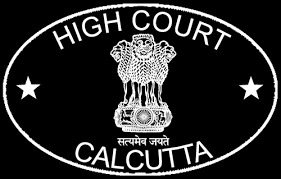B.K. Sharma, J.@mdashBoth the writ petitions raising seniority dispute pertaining to the same establishment and cadre have been heard together and are being disposed of by this common judgment and order.
2. At the time of filing the writ petitions, the two petitioners involved in the writ petitions were working as Lower Division Clerk (LDC) in the establishment of the Chief Judicial Magistrate, South Tripura, Udaipur and the Chief Judicial Magistrate, West Tripura, Agartala respectively. The petitioners were initially appointed as non-regular copyists for a period of 6 months. Both of them were so appointed in the year 1981. On the other hand, the respondent No. 7 Shri Dilip Kumar Sinha and the respondent No. 8 Shri Kajal Kanti Sengupta were so appointed in the year 1982. In the draft seniority list of non-regular copyist as on 1.3.1984, the petitioners'' names appeared at serial No. 4 and 1 respectively and that of the respondent Nos. 7 and 8 at serial Nos. 9 and 15 respectively.
3. The petitioner in the first writ petition was appointed in the regular post of typist-copyist by order dated 18.7.1984, while the petitioner in the second writ petition was so appointed by order dated 30.3.1984. At that point of time, the private respondents were still working as non-regular copyist. However, by order dated 8/10.6.1992 (Annexure-E), they were shown regularized as typist-copyist with effect from 26.8.1982 stating the same to be the date from which their juniors were appointed as Typist-Copyist. By the said order, both of them were deemed to have been appointed on regular basis as typist-copyist with effect from 26.8.1982. It will be pertinent to mention here that in none of the writ petitions this order is under challenge. Being aggrieved, both the petitioners made representations, copies of which have been annexed to the writ petitions as Annexure-E and F respectively. However, none of the representations is dated. The prayer made in the representations was for retrospective regularization of service at par with the respondents.
4. The draft seniority list of Group-C staff as on 1.11.1996 was published vide memorandum dated 20.3.1997, in which the respondents Nos. 7 and 8 were placed at serial Nos. 95 and 96, while the petitioners were placed at serial Nos. 112 and 109 respectively. The draft seniority list was re-published by memorandum dated 14.7.1997, in which also the private respondents were assigned higher seniority above the petitioners. Finally, the final seniority list of Group-C staff was published by memorandum dated 26.2.1998, in which the private respondents figured at serial Nos. 68 and 69 respectively, while the petitioners figured at serial Nos. 90 and 87 respectively.
5. It is in the aforesaid backdrop the writ petitions were filed in the year 1998. Long 10 years have passed since then and about 17 years have passed since the private respondents were regularized in the post of typist-copyist with retrospective effect at par with their juniors by order dated 8/10.6.1992, which is also not under challenge. The petitioners apart from making challenge to the memorandum dated 26.2.1998, by which the final seniority list was published assigning the higher seniority to the private respondents, have also made a prayer in the writ petitions to grant them retrospective regularization of service with effect from 26.8.1982 at par with the private respondents.
6. The respondents have filed their counter affidavit disputing the claim made in the writ petitions. The gist of the resistance to the writ petitions is that a selection was conducted in the year 1981 for the post of LDC in which the private respondents could qualify while the petitioners could not. However, instead of appointing them oh regular basis, they were appointed on non-regular basis in March, 1982. The select list pertaining to the 1981 selection was published on 2.3.1981. Appointments were made up to serial No. 24. The respondent Nos. 7 and 8 allegedly could not be appointed as their merit positions were at serial Nos. 25 and 26. Subsequently, the authority found that 7 persons whose merit positions were below the private respondents were appointed with effect from 26.8.1982. Those 7 candidates although could not qualify in the type test, and could qualify only in the written test were given another chance to appear in the type test which they could quality and consequently they were appointed as LDC with effect from 26.8.1982. On the other hand, the private respondents were not appointed although they had qualified in the 1981 selection. The authority upon a thread bare discussion of the matter decided to grant retrospective regularization to the private respondents at par with the aforesaid 7 candidates.
7. We have heard Mr. S. Talapatra, Learned Senior Counsel assisted by Mr. B. Banerjee, Learned Counsel for the petitioners as well as Mr. P. Dutta, Learned Counsel representing the official respondents. We have also heard Mr. Somik Deb, Learned Counsel representing the private respondents. We have also perused the records produced by Mr. Dutta. We have given our anxious consideration to the submissions advanced by the Learned Counsel for the parties and the materials on record.
8. It is an admitted position that in the 1981 selection, while the private respondents could qualify in both the written test and type test, the petitioners either did not appear in the selection or could not qualify in the same. The aforesaid 7 candidates in reference to whom the private respondents had been given retrospective regularization of service could not qualify in the type test. As noted above, although, they had qualified only in the written test. The private respondents were not given appointment on the ground of non-existence of vacancy. As noticed above, their merit positions were serial Nos. 25 and 26 and the appointments were made up to serial No. 24. However, later on, the aforesaid 7 candidates who could not qualify in the type test were allowed to qualify in a subsequent type test conducted in 1982 and they were appointed with effect from 26.8.1982, against available vacancies.
9. From the above, it will be seen that the aforesaid 7 candidates who could not qualify in the 1981 selection so far as type test is concerned, had been preferred over the private respondents in the matter of appointment unmindful of the fact that the private respondents had already qualified in the said selection both in written and type test and thus naturally had by far better claim than the said 7 candidates. The authority having realized the fallacy, took up the matter by constituting a DPC, which met on 19.4.1992, 20.4.1992 and 21.4.1992 and upon a threadbare, discussion of the matter in its entirety, decided to grant the similar benefit to the private respondents at par with the said 7 candidates. It will be pertinent to mention here that three learned District & Sessions Judge constituted the DPC. As has been observed by the Apex Court in
10. Although, it was contended on behalf of the petitioners that they could not make any immediate challenge in respect of their grievance, as they were not aware about the existence of the order dated 8/ 10.6.1992, but from the writ petitions, what has transpired is that both the petitioners were aware about the said order. As noticed above, the petitioners made individual representations after issuance of the aforesaid order dated 8/10.6.1992. This order is not under challenge in the writ petitions. What has been challenge is the consequential gradation list. The private respondents have not derived higher seniority over the petitioners because of any wrong committed by the official respondents in publishing the provisional and the final seniority list. They have derived their higher seniority from the aforesaid order dated 8/10.6.1992.
11. The aforesaid order dated 8/10.6.1992 continued to hold the field for long 6 years when the writ petitions were filed without, however, making any challenge to the said order. During this entire period, the petitioners have all along been treated as juniors to the private respondents and the rights inter-se has crystallized which in our considered opinion cannot now be re-opened after a lapse of such a long period. It is well settled that in service matters the question of seniority should not be re-opened after a lapse of a reasonable period because that results in disturbing the settled position which is not justifiable. There was inordinate delay in making the grievance by the petitioners. As has been held by the Apex Court in
12. In
...A person aggrieved by an order of promoting a junior over his head should approach the court at least within six months or at the most a year of such promotion. It is not that there is any period of limitation for the courts to exercise the powers under Article 226 nor is it that there can never be a case where the courts cannot interfere, in a matter after the passage of a certain length of time. But it would be a sound and wise exercise of discretion for the courts to refuse to exercise their extraordinary powers under Article 226 in the case of persons who do not approach it expeditiously for relief and who stand by and allow things to happen and then approach the court to put forward stale claims and try to unsettle settled matters. The petitioner''s petition should, therefore, have been dismissed in limine. Entertaining such petitions is a waste of time of the court. It clogs the work of the court and impedes the work of the court in considering legitimate grievances as also its normal work. We consider that the High Court was right in dismissing the appellant''s petition as well as the appeal.
13. There is another aspect of the matter. The petitioners have claimed seniority over the private respondents. In the final gradation list, the positions of the petitioners vis-a-vis the private respondents are at serial Nos. 90 and 87 and 68 and 69. If the petitioners are allowed seniority over the private respondents, they will score a march over many others, who are not party to this proceeding. Same is the position in respect of the challenge made to the final gradation list. As has been held by the Apex Court in
14. The decision on which Mr. Talapatra, Learned Counsel for the petitioners has placed reliance
15. For all the aforesaid reasons, we do not find any reason to interfere with the final gradation list of LDC published as on 1.11.1996 vide memorandum dated 26.2.1998 and/or to issue any direction to grant retrospective regularization of service to the petitioners with effect from 26.8.1982 with consequential benefit of seniority over the private respondents.
16. The writ petitions are dismissed, without, however, any order as to costs.

